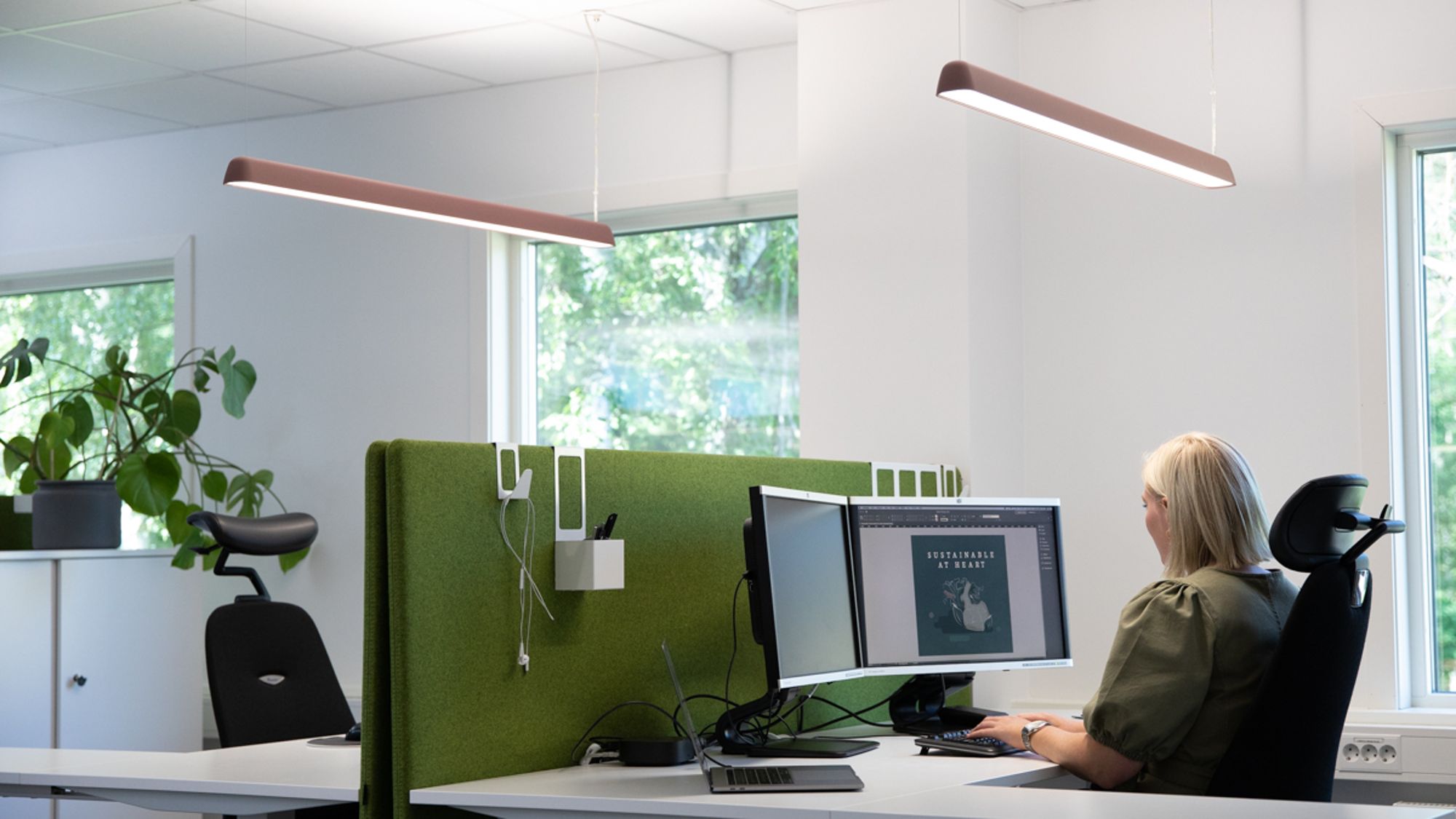Calculation of glare number
The degree of discomfort glare for indoor installations can be estimated by making a glare number calculation according to the UGR method.

The glare number requirements documented according to EN 12464-1 refer to the highest average value for the lighting. The UGR (Unified Glare Rating) method is described in CIE publication no. 117-1995.
The UGR glare number for discomfort glare is specified on a scale, which in practice goes from 13 to 28, where the highest glare number indicates the strongest glare. The lowest difference between the glare numbers denoting a significant difference is 3.
To check whether the average glare number in the standard's collection of tables is met by a specific lighting installation, the glare number is calculated using the table method (the method is described in the CIE publication no. 117-1995). However, this method assumes that the luminaires in the room are positioned symmetrically and feature symmetrical light distribution across and along the luminaire.
Since all established limit values are based on the UGR table method, other methods cannot be applied, such as individual observer points according to the formula method. To maximize the use of the table method, a new Annex A is now included in the standard, which describes recommended methods, when there are deviations from the specific conditions. For example, irregular luminaire placement, multiple luminaire types, different-shaped rooms.
Luminaire manufacturers provide information/table data as a part of the luminaire’s photometric data so that you can easily check the lighting installation’s glare number.